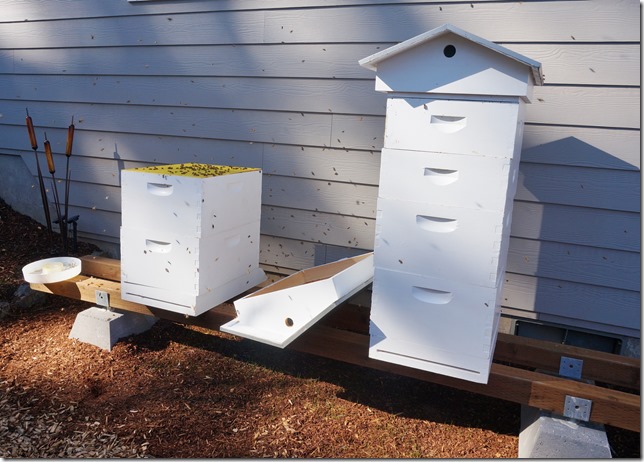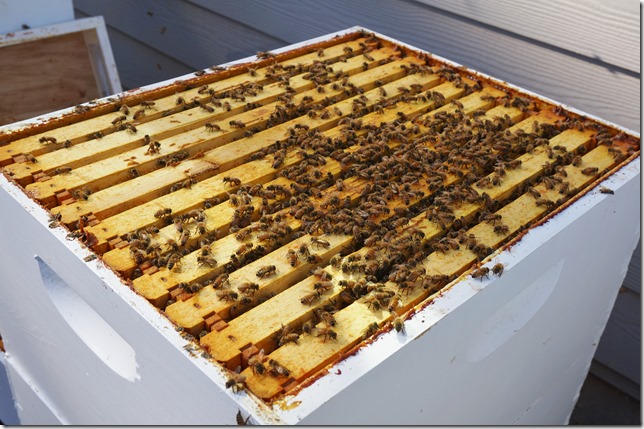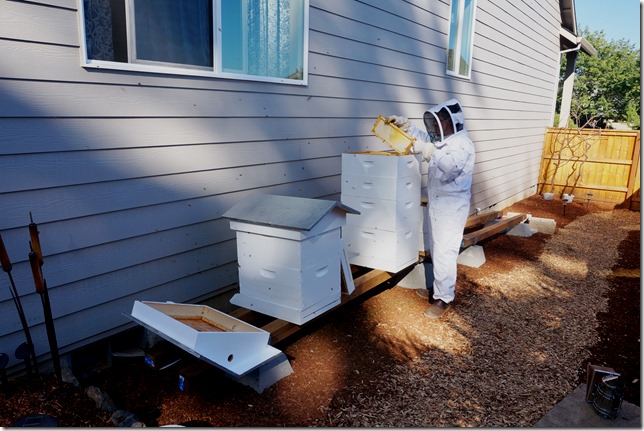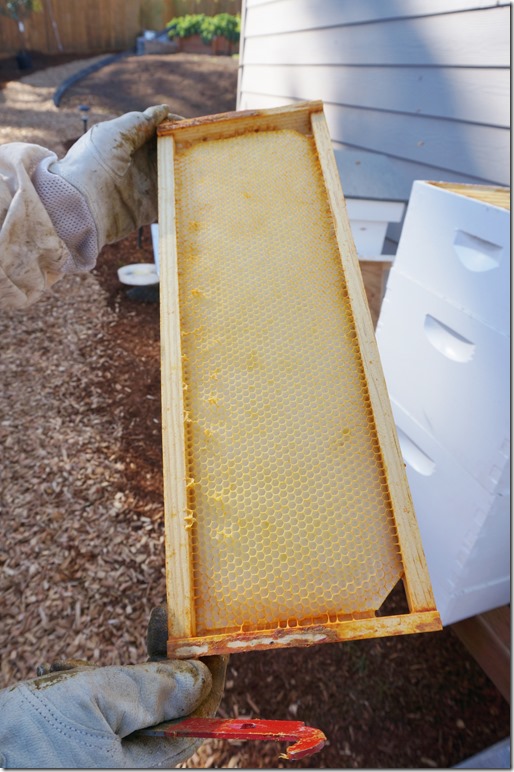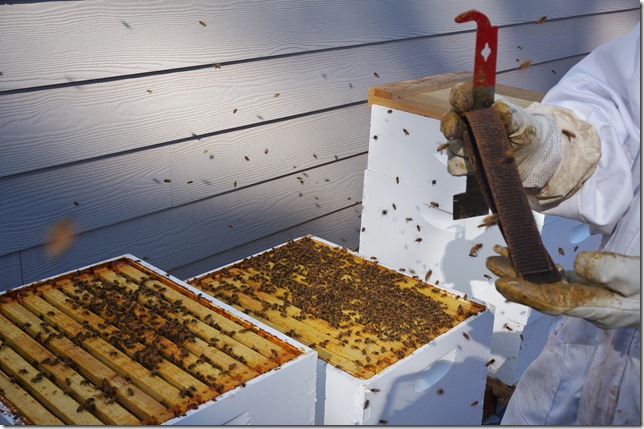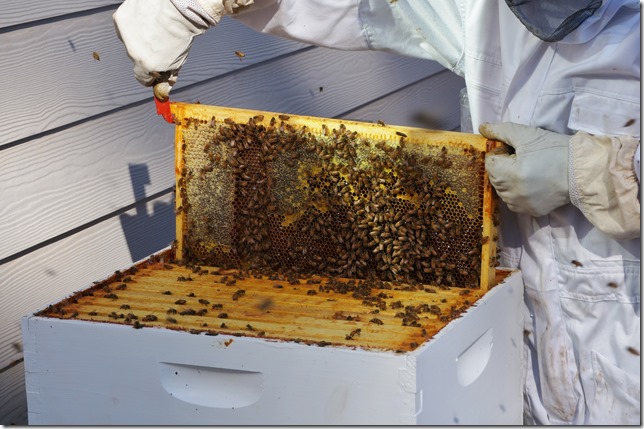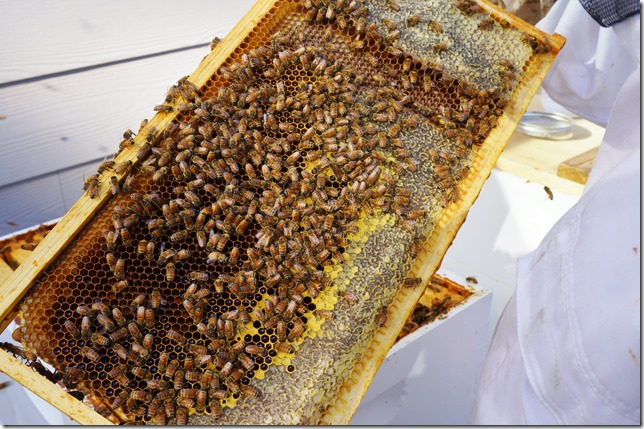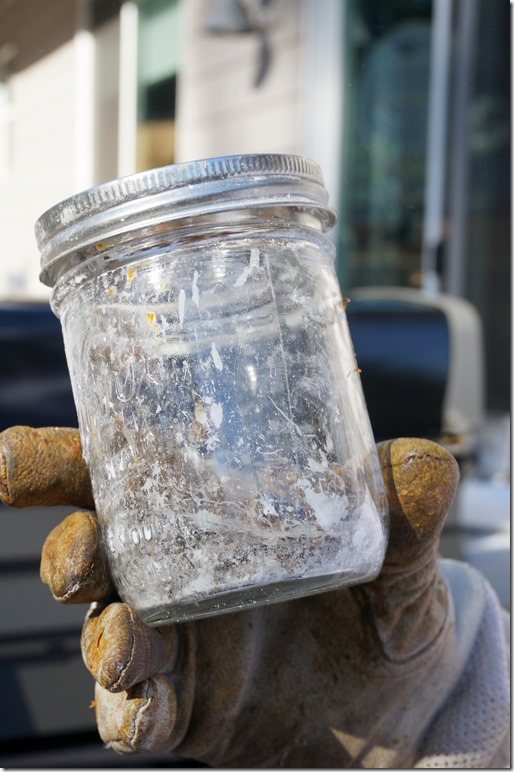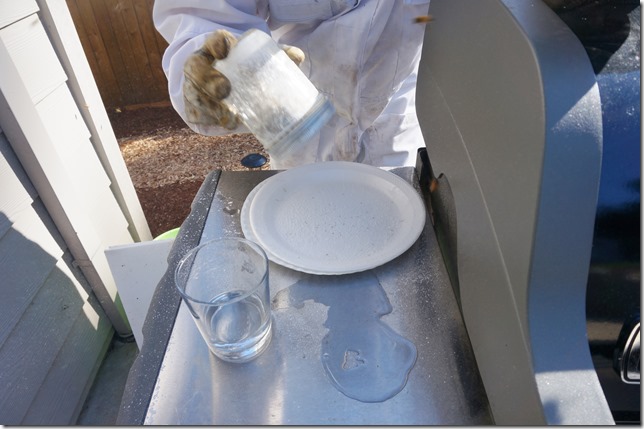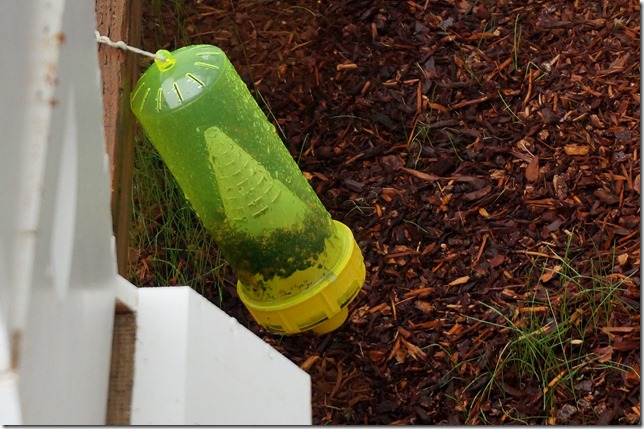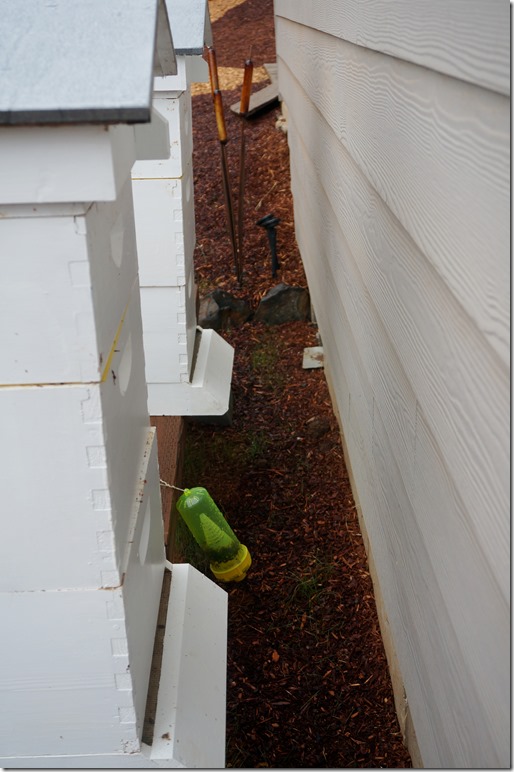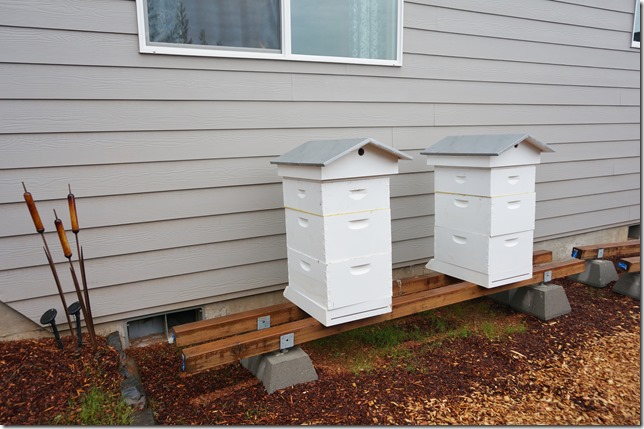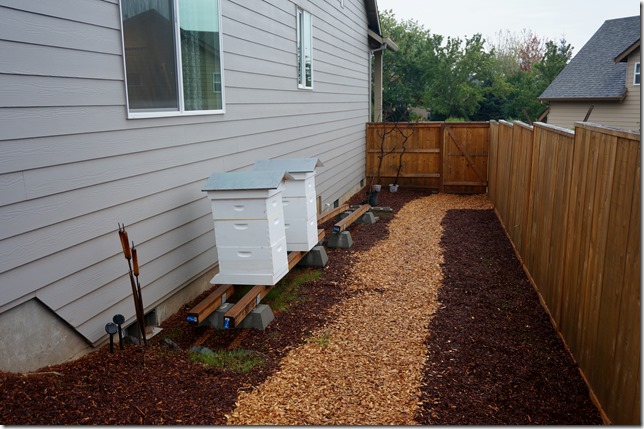The honeybees have been home for a few weeks now, and with fall approaching The Renaissance Man decided it was time to get the honeybees ready for winter.
Just like you winterize your house, you also need to winterize your honeybees. We’ll be removing the empty honey supers and checking the hives for mites.
First things first, we needed to take off the empty honey supers from the top of the hives (the upper two boxes). If you remember when we extracted the honey, we put the almost empty honey supers back on the top of the hive so that the honeybees would clean up the newly empty comb.
Here The Renaissance Man is pulling out the empty honey frames and making sure all the honeybees get removed so the top honey super box can be removed.
It’s hard to believe that this empty honey frame was once very full of honey. The honeybees do an excellent job of cleaning the comb and not leaving an ounce of honey behind.
The last time The Renaissance Man was in the bee hives he did a mite treatment, which is the black strip he’s holding in his hands. It’s important to treat the honeybees for mites this time of year so that each hive’s population stays strong and healthy through the winter.
To insure that the mite treatment worked, we did a quick mite check on each hive. The mason jar is filled with about 300 honeybees along with powdered sugar. First you cover the lid and shake the jar with powdered sugar which releases the mites from the honeybees.
Then you then shake the jar over a paper plate and all of the mites fall out. A quick splash of water on the plate dissolves all of the powered sugar and then you can count up the number of mites which show up as little black specks on the plate. Our mite load was pretty low so our honeybees should be good for winter!
The other thing we’ve been fighting this time of year is the yellow jackets. I’m sure if you’ve tried to have an outdoor picnic in the fall you know exactly what I’m taking about. The yellow jackets are aggressive and they’ve been preying on our honeybees. I’d been watching the yellow jackets “dive bomb” our honeybees and eat them and I finally got fed up!
We went straight to the store and purchased a yellow jacket trap and baited it with some leftover salmon scraps from dinner. In the matter of a few days we caught about fifty yellow jackets! No more eating our honeybees!
Location is key for the yellow jacket trap, we’ve placed it right between the two hive entrances.
Our apiary is certainly coming along and we’re really happy with the location of the hives, it’s a great use for this side of our house. This winter our plan is to set up an additional hive stand (you can see our supplies to the right of the hives) and hopefully build and paint three new hives to add to our honeybee yard.
We love our honeybees!
